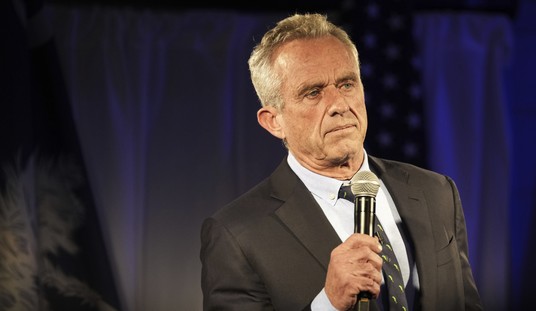=========
=========
Promoted from the diaries by streiff. Promotion does not imply endorsement.
=========
=========
What is the future of the International Space Station? Inhabited continuously since 2000, the space station (ISS) is our priceless scientific laboratory in space, where daily experiments advance medical health, high technology and our future in space.
However, the very existence of the space station is now uncertain. In 2025, the station could be ‘de-orbited’—destroyed would be the honest word. It could be privatized in some developing manner. It could be partially dismantled into a smaller station. Or it could be continued with a guaranteed budget during the transition for an extended period while new commercial partners ramp up to eventually be able to fully replace much of NASA’s share of ISS expenses.
Prematurely destroying ISS would be a catastrophe of the worst magnitude. The U.S. has invested an estimated one hundred billion dollars in developing, constructing and operating ISS, and the science performed daily onboard is impossible to replicate on earth.
Privatizing ISS offers great potential benefits and serious potential risks. It’s easy to forecast ISS in the future as a hub of commercial activity with additional corporate manufacturing modules and a hotel for visiting tourists, and being operated perhaps well into the 2030s.
While supportive of privatization, Senator Ted Cruz (R-TX) and other conservatives oppose cutting NASA funding from ISS in 2025, but extending funding until at least 2028.
In his opening statement to the Senate Subcommittee on Space, Science, and Competitiveness hearing on ISS, Cruz said, “Prematurely canceling a program for political reasons costs jobs and wastes billions of dollars. We cannot afford to continue to pursue policies that have the consequence of creating gaps in capability, that send $3.5 billion in taxpayer money to the Russian government or create a leadership vacuum in low Earth orbit that provides a window of opportunity for the Chinese to capitalize upon. Let me be clear, as long as I am the chairman of the Space subcommittee, the ISS will continue to have strong support and strong bipartisan support in the United States Congress.”
So far, the preliminary instructions to privatize ISS have resulted in confusion and doubt over whether sufficient companies, universities and existing international ISS partners could sufficiently replace NASA’s share of the budget minus the amounts NASA would spend for purchased services.
This point was emphasized by the May 2018 NASA’s Inspector General report to the Senate Subcommittee on Space, Science, and Competitiveness: “it is unlikely that a private entity or entities would assume the Station’s annual operating costs, currently projected at $1.2 billion in 2024. Such a business case requires robust demand for commercial market activities such as space tourism, satellite servicing, manufacturing of goods, and research and development, all of which have yet to materialize.”
One of the many reasons for retaining ISS is that critical research work remains to be done on ISS beyond 2024, as described in the May 2018 NASA Inspector General’s report: “as of February 2018, NASA forecast that research for at least 6 of 20 human health risks requiring the ISS for testing and 4 of 40 technology gaps will not be completed by the Station’s planned retirement in September 2024. In addition, research into 2 other human health risks and 17 additional technology gaps is not scheduled to be completed until sometime in 2024, meaning that even minor schedule slippage could push completion past the Station’s planned retirement date.”
Dismembering parts of ISS with the aim of reducing the ISS operating budget might not markedly reduce the required budget—after all, ground operations needs would change little, nor would astronaut training and a hundred other essential elements of ISS operations. Further, a smaller ISS may not be able to conduct as much science or accommodate many new commercial partners, and fewer resulting astronauts may have their time consumed with maintenance and have less time for science.
Congress and NASA have had a sad history of cancelling promising programs. In 2012, Reps. John Culberson (R-TX), Frank Wolf (R-VA-10), Bill Posey (R-FL), Pete Olson (R-TX), James Sensenbrenner (R-WI) and Lamar Smith (R-TX) reported that, “in the past 20 years alone, 27 [NASA] programs have been cancelled resulting in over $20 billion wasted on uncompleted programs.” The long list includes the Constellation/Aries I and V, the National Aerospace Plane and the DC-X single-stage-to-orbit rocket (which pioneered the technology for reusable rocket boosters). Cancelling the shuttles before commercial replacements were ready was yet another mistake. Rewinding further, plans projected beyond Apollo included a lunar base and landings on Mars in the 1980s and 1990s.
Imagine how advanced our space program might be had just some of these projects been completed? We must not repeat the mistakes of the past by prematurely risking ISS’ survival during a transition to a more privatized model without the guaranteed interim funding to make it succeed.
Beyond science issues and to provide a platform for commercial investments on ISS, there’s yet another vital reason to retain ISS as a NASA space station, in conjunction with our international partners. The Chinese government media outlet, Xinhua, reports that China has accelerated the plans for their military-led space station, with their first section now scheduled to be launched in 2020.
The projection of peaceful power as an official NASA station, in partnership with other nations, cannot be underestimated in the era of Chinese attempts to militarize international waters and assertions of “vertical sovereignty” in space. Secure access to orbital space could be endangered if China ends up as the only country with an official orbital station.
Further, any uncertainty about the long-term survival of ISS might push some of our 21 ISS partner nations as well as prospective commercial ventures to jump ship to China’s station—who would welcome their money and plunder their cutting-edge technologies.
The first steps for privatization efforts should be to gain the approval and continued support of our 21 international partners, and to guarantee funding through at least 2028 so if early privatization efforts fail to cover NASA’s ISS budget, the space station would not be needlessly destroyed. In fact, approval from our ISS partners would be easier to obtain with guaranteed funding during the transition.
Sen. Cruz remarked in his May hearing that, “The International Space Station is the largest and most complex habitable space-based research facility ever constructed by humanity. It’s a marvel of engineering, and it’s critically important to our national space program.” The future of ISS should not be gambled on uncertain privatization goals absent guaranteed funding.
Art Harman is the director of the Coalition to Save Manned Space Exploration, and served as the legislative director and space advisor for Rep. Steve Stockman (R-Texas) in the 113th Congress. Harman studied foreign policy at the Institute of World Politics and is a frequent guest on radio shows on key policy issues.












Join the conversation as a VIP Member